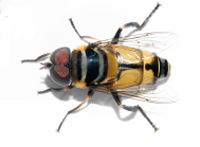The role of chromosomes in heredity
 Thomas Hunt Morgan was sceptical of the way that biological traits discover the physiological basis for inheritance.
Thomas Hunt Morgan was sceptical of the way that biological traits discover the physiological basis for inheritance.
Drosophila, with its short life cycle, ease of culturing, low cost and high reproductive rate, was selected as a suitable animal model for the studies. Initially the fruit flies were raised on bananas before a standard culture medium was developed. He eventually found useful mutations which allowed him to study sex-linked inheritance He proposed the idea of ‘crossing over’ in which genetic information is exchanged between the male and female gametes during meiosis.
The first mutation was white-eyed fly. As more mutations were discovered, they fell into four groups, which corresponded with the four pairs of chromosomes found in drosophila. The small number of chromosomes made drosophila a fortunate choice of model, and proof that genetic material was carried on chromosomes came in a 1916 paper, which showed that irregular segregation of sex chromosomes during fertilisation (non-disjunction) results in dramatic mutation.
Morgan developed four new rules of inheritance, which followed from Mendel’s laws, and his careful breeding experiments providede a physical basis for inheritance of genetic characteristics.
Last edited: 27 August 2014 06:01
